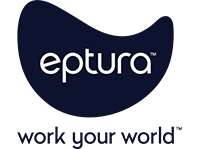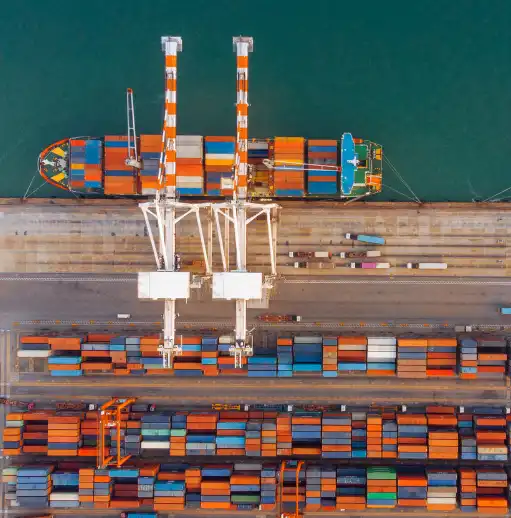
With a landscape that demands urgency to modernize operations, one metric quietly reveals just how effectively you’re squeezing value out of your physical assets: asset turnover. It’s not flashy, but it’s foundational. High-performing organizations know that turning over assets efficiently — whether that’s machinery, equipment, or even entire facilities — means more output with less waste, less downtime, and ultimately, more revenue per dollar invested.
But you can’t improve what you can’t measure. That’s where a CMMS (Computerized Maintenance Management System) steps in — not just as a digital logbook for maintenance tasks, but as a strategic tool that transforms how you understand, manage, and optimize your assets in real time. And if your organization has digital twin aspirations, your CMMS isn’t just a helpful tool — it’s your launchpad.
Asset turnover: A window into operational health
Asset turnover often gets relegated to finance teams and quarterly reviews. But behind the numbers is a real-world story about how well your assets are being deployed. A high turnover ratio tells you that your equipment is humming, your maintenance is dialed in, and your downtime is minimal. A lagging ratio, on the other hand, can signal bottlenecks, underused capacity, or creeping inefficiencies that are harder to spot from the surface.
What makes this so relevant now is that organizations are sitting on more operational data than ever, but without the right systems in place, that data stays locked away in silos, reports, or spreadsheets. That’s why CMMS tools have shifted from being “nice-to-have” maintenance trackers to critical infrastructure for real-time, data-driven operations.
From maintenance tracker to strategic engine
A well-implemented CMMS doesn’t just tell you when to replace a filter or schedule a service call. It gives you continuous visibility into the health, performance, and availability of your assets across sites, teams, and even continents. That real-time awareness feeds into better decision-making around when to repair, when to retire, and when to reinvest — core levers in improving asset turnover.
More importantly, it shifts maintenance from reactive to predictive. Instead of waiting for a breakdown that sidelines operations, your CMMS alerts you to patterns — like a pump that’s cycling more frequently than usual or a machine whose temperature spikes before a fault. Catching those signals early not only reduces unplanned downtime but also extends asset life, lowers costs, and keeps your operations fluid.
That’s how asset turnover improves: not with one big change, but through thousands of smarter, faster decisions that compound over time.
The digital twin connection: Why CMMS is your first step
If you’re exploring digital twin technologies — or just trying to understand what makes your operation “digital twin-ready”— the foundation is already in your hands. Your CMMS collects the very data that powers a digital twin: asset condition, performance metrics, maintenance history, part replacements, operational context.
But here’s the nuance: not all data is created equal. A digital twin doesn’t just need data; it needs structured, real-time, high-integrity data. That’s exactly what a modern CMMS delivers.
The better your CMMS implementation, the better your organization is positioned to build virtual models that mirror the real-world performance of your assets. These twins can simulate outcomes, predict failures, and optimize performance — leading to gains in efficiency, sustainability, and even workforce planning.
In other words, you can’t simulate the future if you don’t understand the present. CMMS gives you that operational clarity.
The role of automation and integration
To truly boost asset turnover and support digital twin functionality, your CMMS must do more than track tickets. The real differentiators today are automation, open APIs, and cross-platform compatibility.
Why does that matter?
Because the average facilities or operations tech stack has grown sprawling and disjointed. Systems don’t talk. Data lives in different dashboards. Insights are delayed or duplicated. Eptura’s newly released 2025 Workplace Index report revealed that over 50% of organizations are currently using an average of 17 standalone worktech solutions, with only 4% achieving full integration with their existing systems.
By contrast, a CMMS that integrates seamlessly with your existing tech ecosystem — from IoT sensors to ERP systems — can pull in real-time data, trigger automated work orders, and feed analytics engines without manual intervention. That level of cohesion doesn’t just streamline maintenance — it creates a fluid, responsive operational model.
And that responsiveness is the heartbeat of a high-turnover, high-efficiency asset strategy.
Navigating the implementation curve
Of course, none of this happens overnight. Retrofitting legacy systems, consolidating data sources, and rethinking workflows can feel daunting, especially in large enterprises with distributed assets and entrenched processes. But digital transformation doesn’t need to be all-or-nothing.
Think of your CMMS as the scaffolding. Start with foundational use cases — like preventive maintenance scheduling or asset tracking. As adoption deepens, layer in predictive analytics, mobile tools, and integration with digital twin platforms. Every step strengthens your data model, refines your operations, and moves you closer to real-time, real-world optimization.
The ROI Is in the turnover
Ultimately, this all comes back to proving value. If your equipment is well-maintained, intelligently monitored, and fully leveraged, it pays you back. Your asset turnover goes up. Your CapEx cycles stretch further. Your workforce spends more time solving problems and less time reacting to them.
And when you’re ready to take the leap into digital twins, you’ll already have the data, the processes, and the cultural readiness to make it more than a buzzword.
CMMS isn’t just a maintenance tool — it’s your operational edge. It gives you the data to see what’s happening now, the structure to optimize what happens next, and the intelligence to plan for what’s ahead.
Get in touch with Eptura to get started on your journey to full digital twin readiness with an integrated, comprehensive CMMS.




